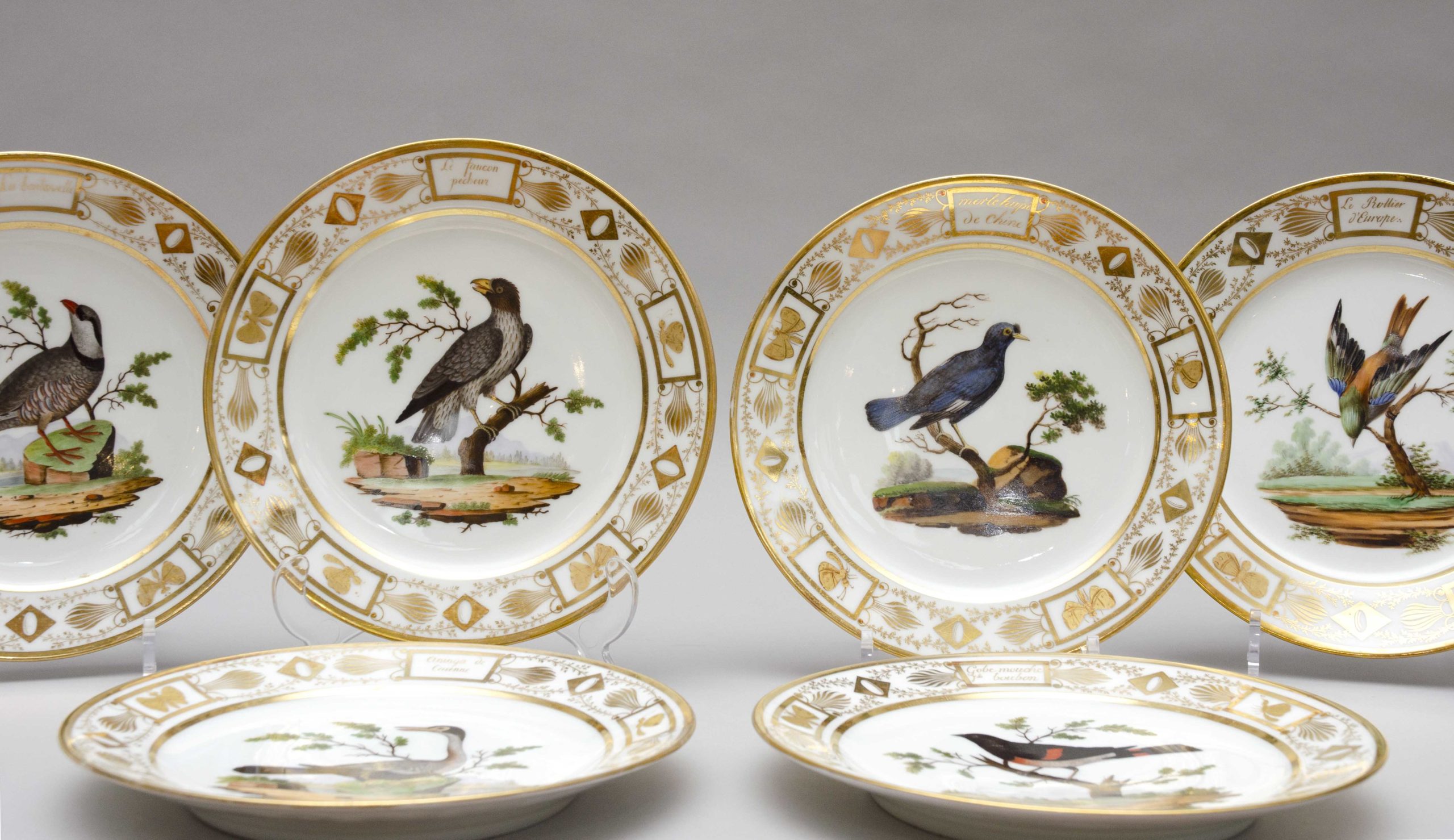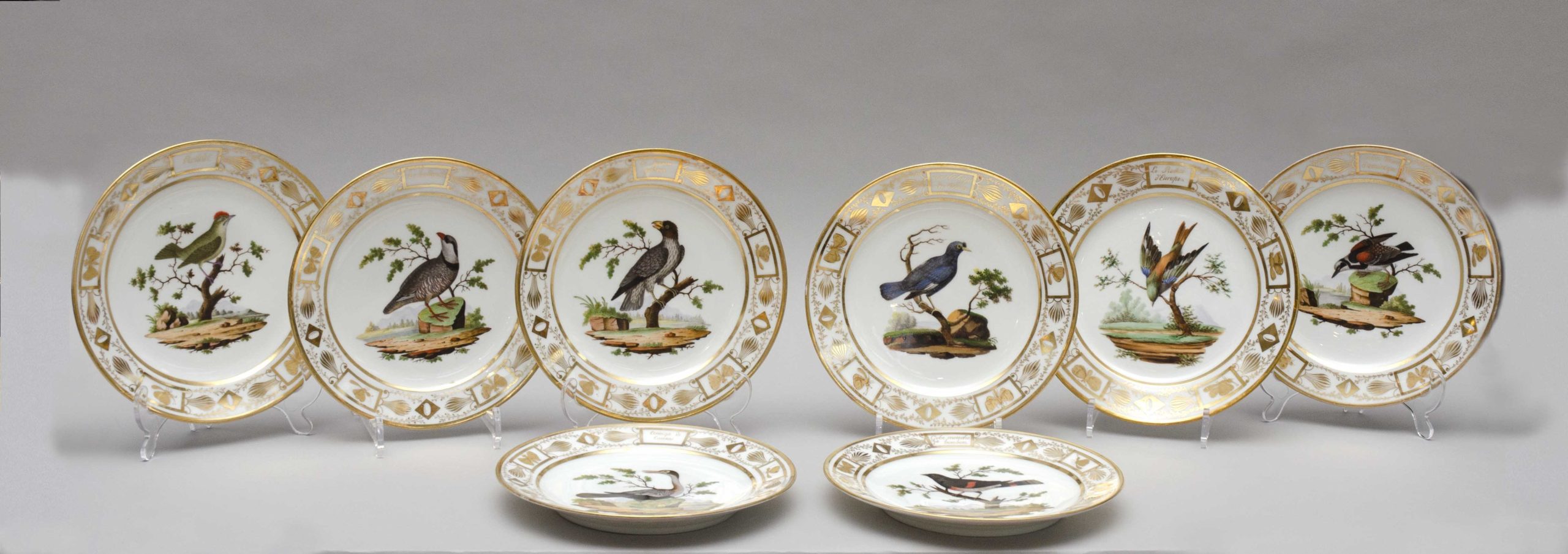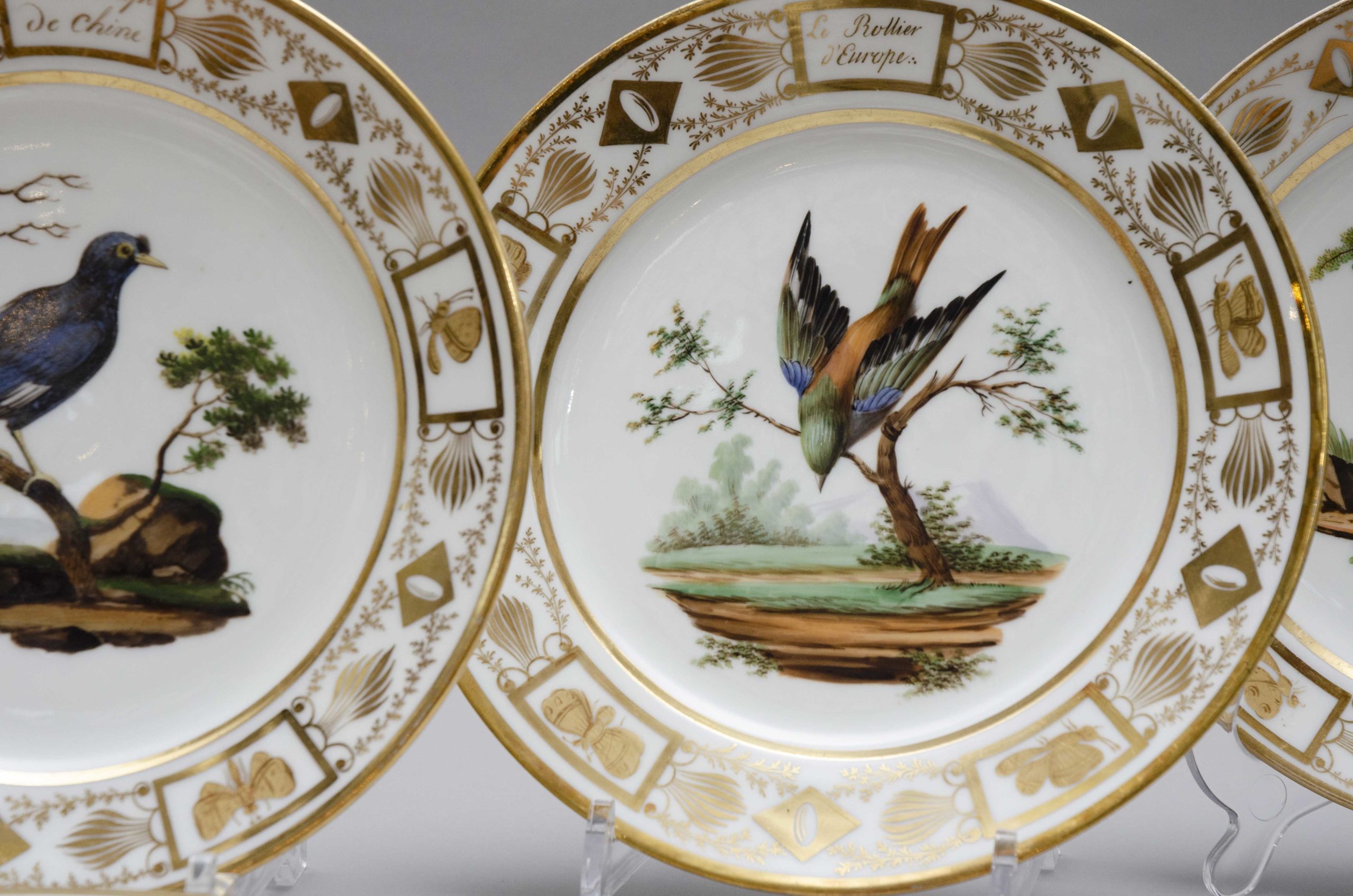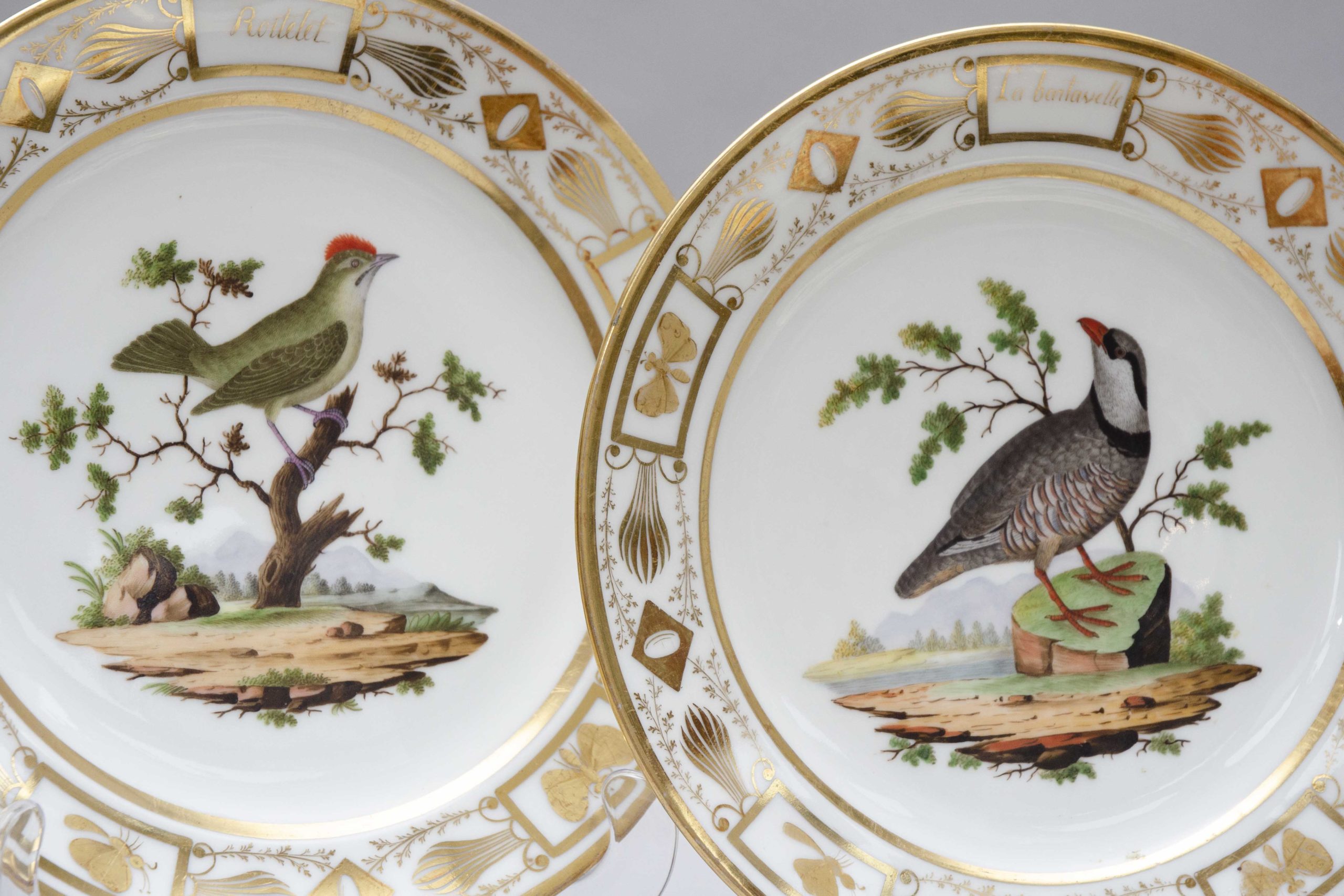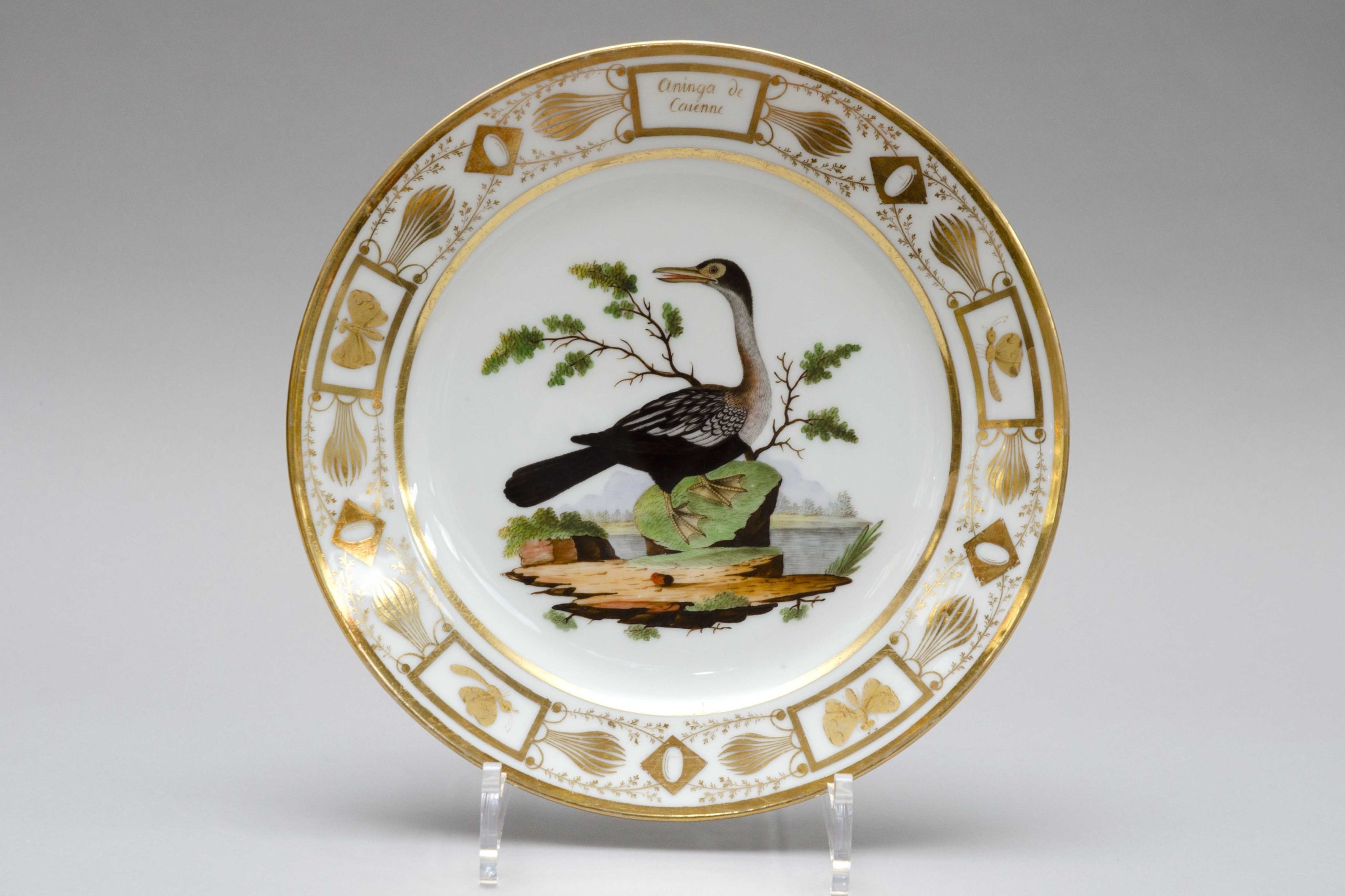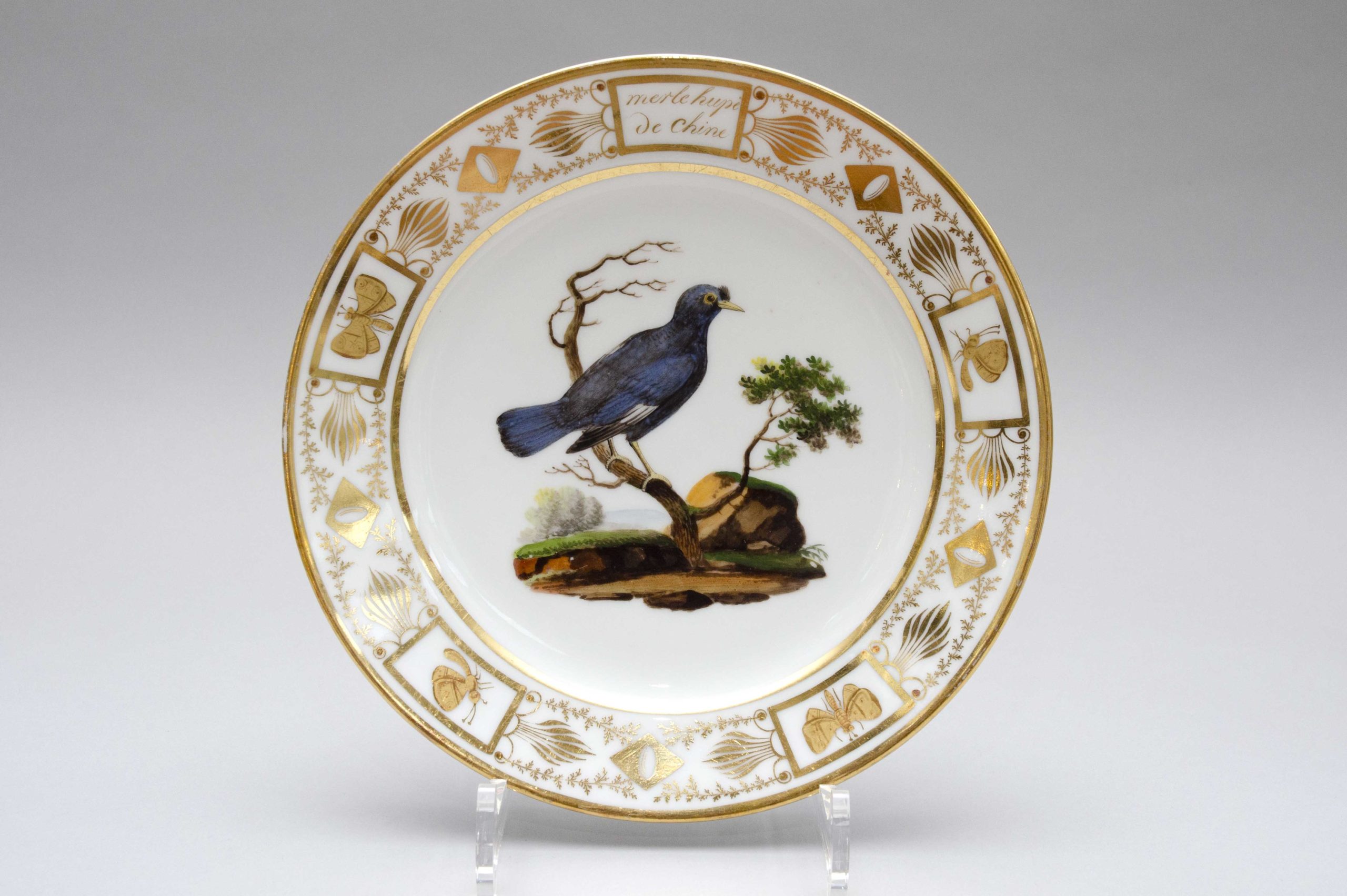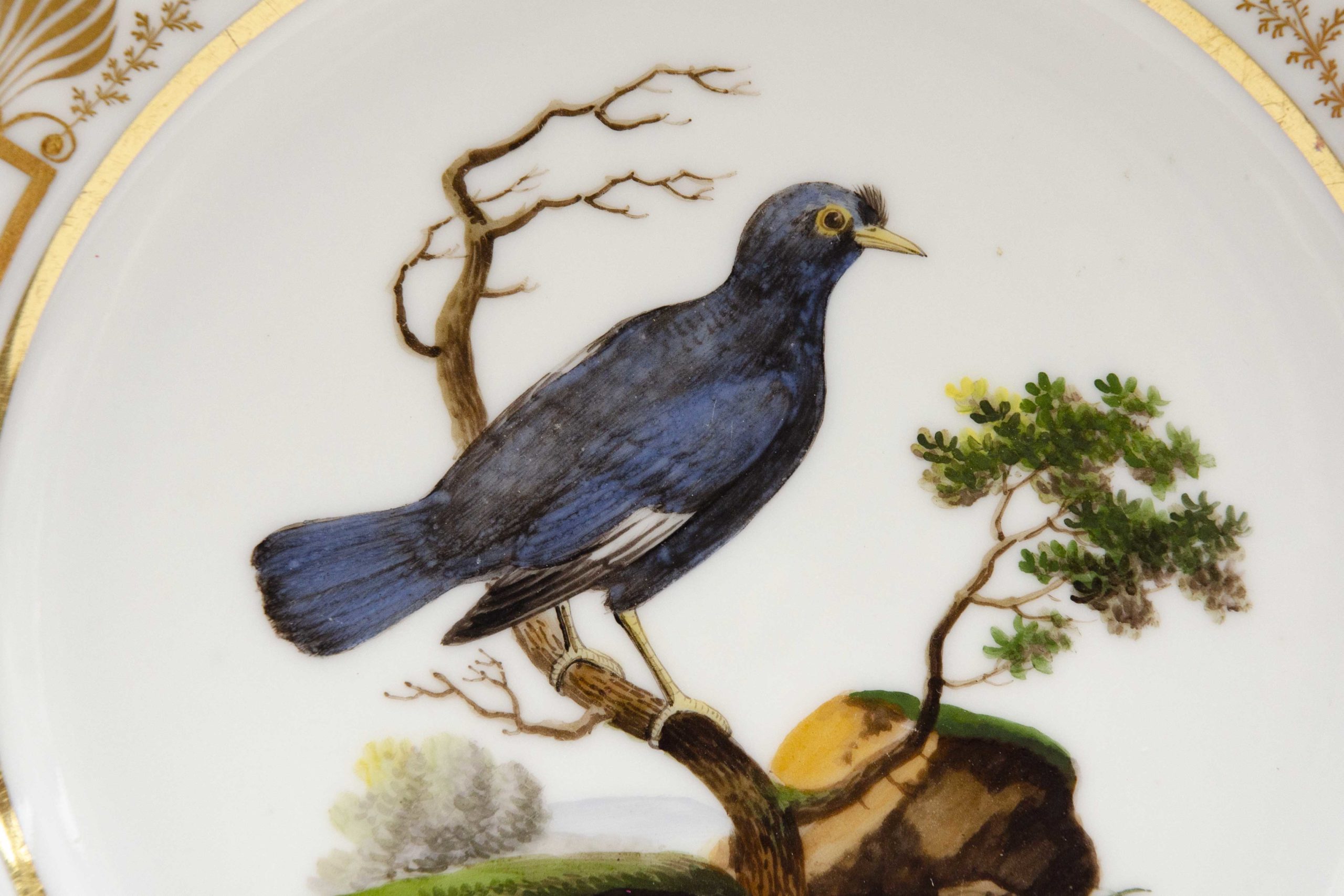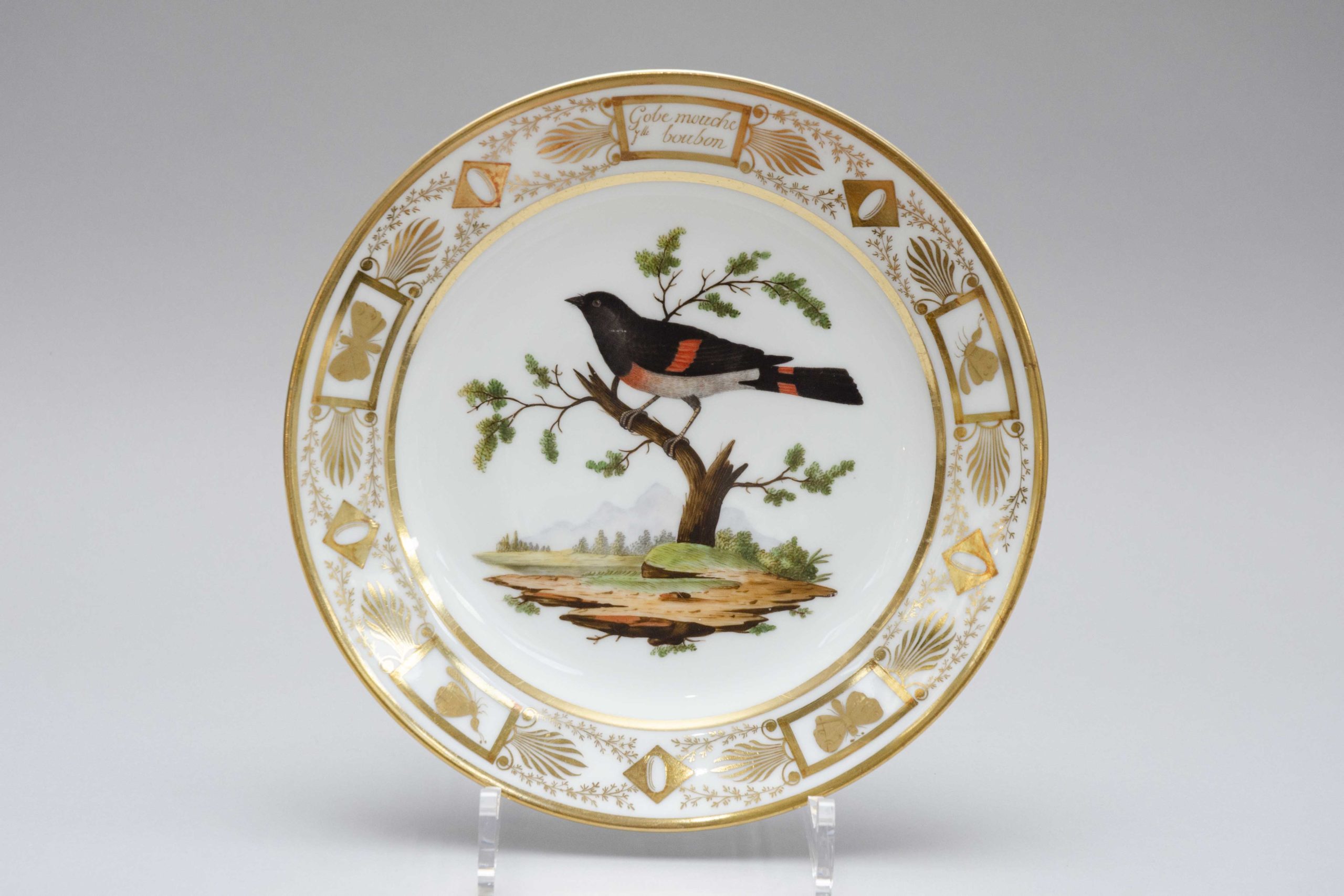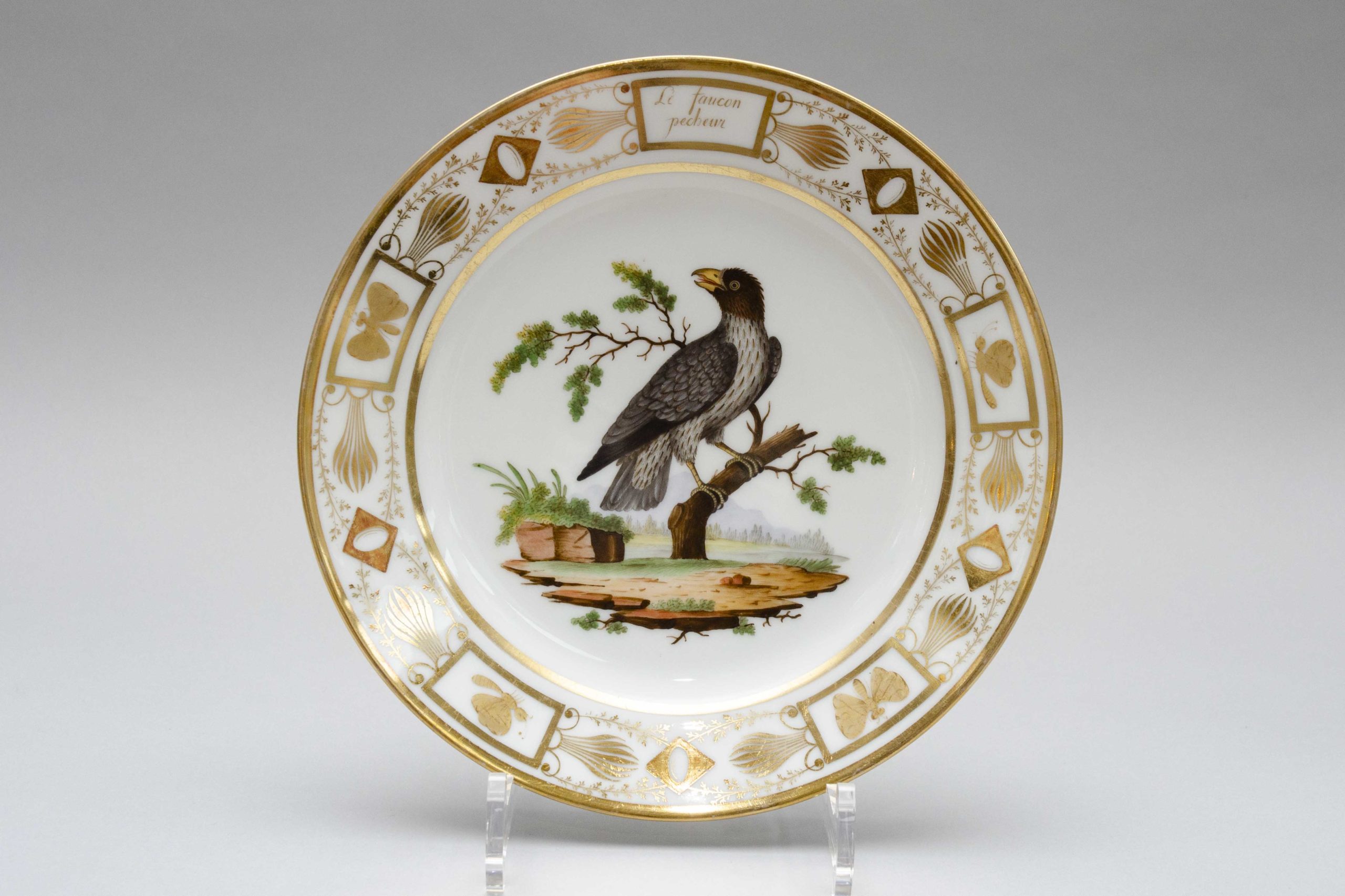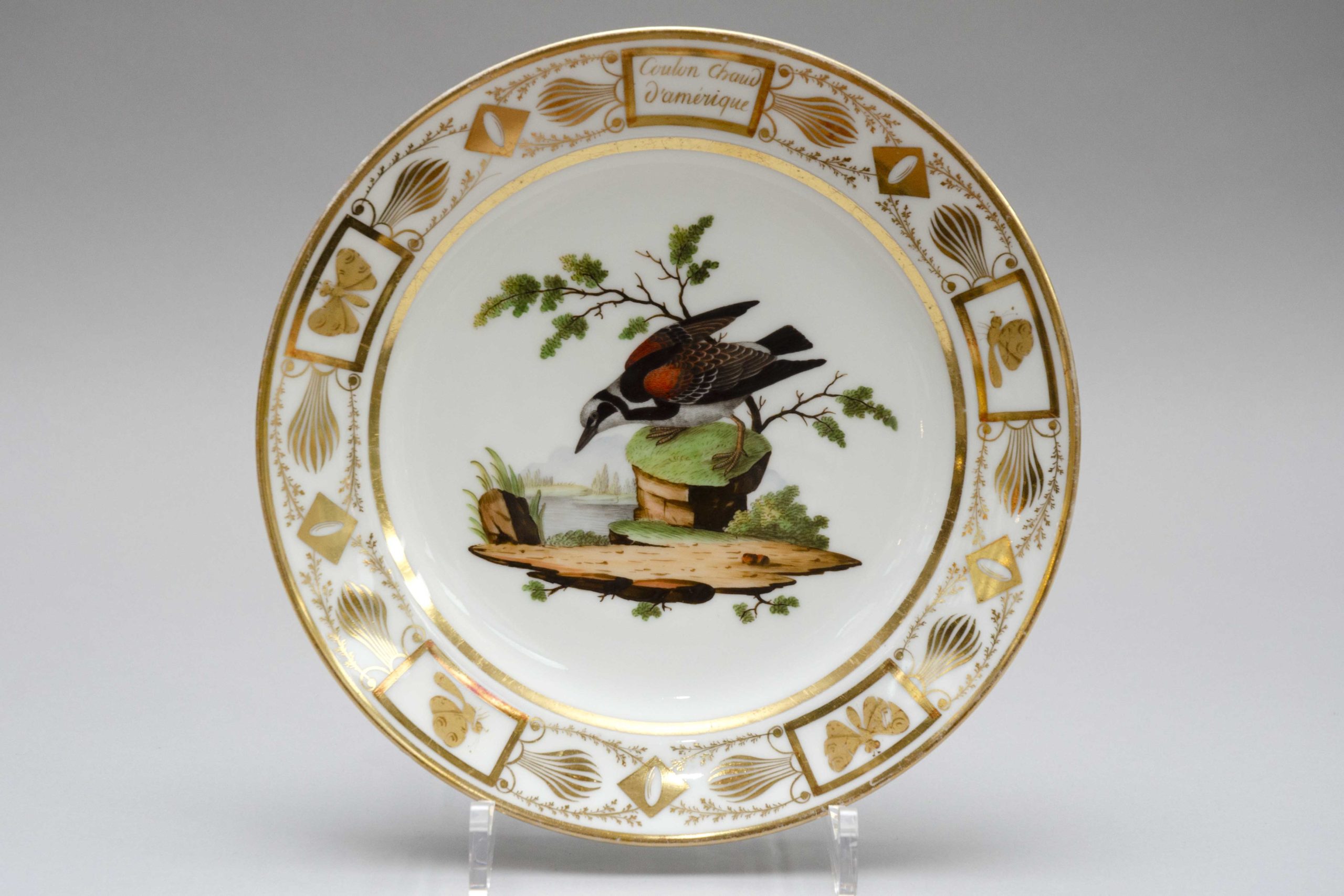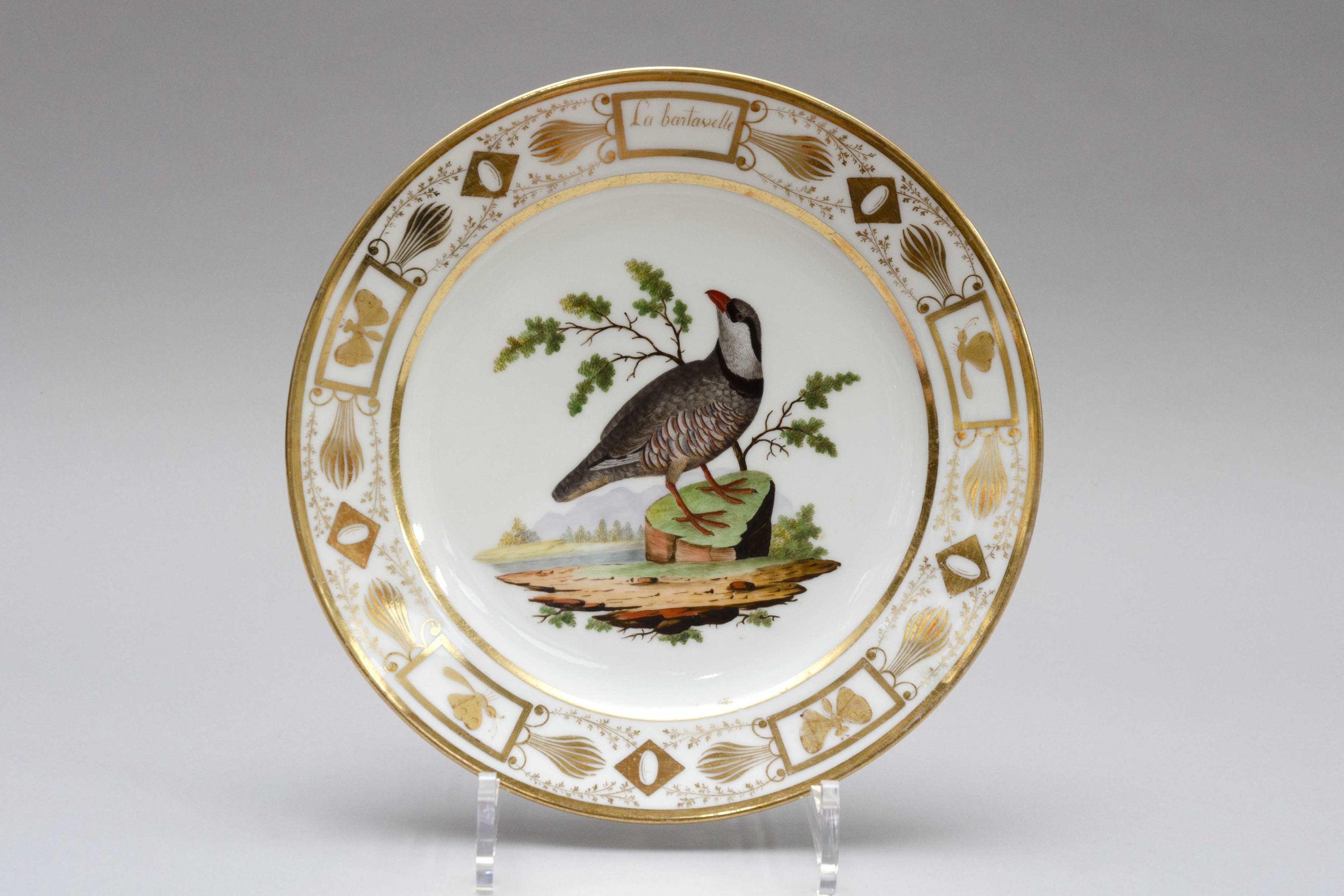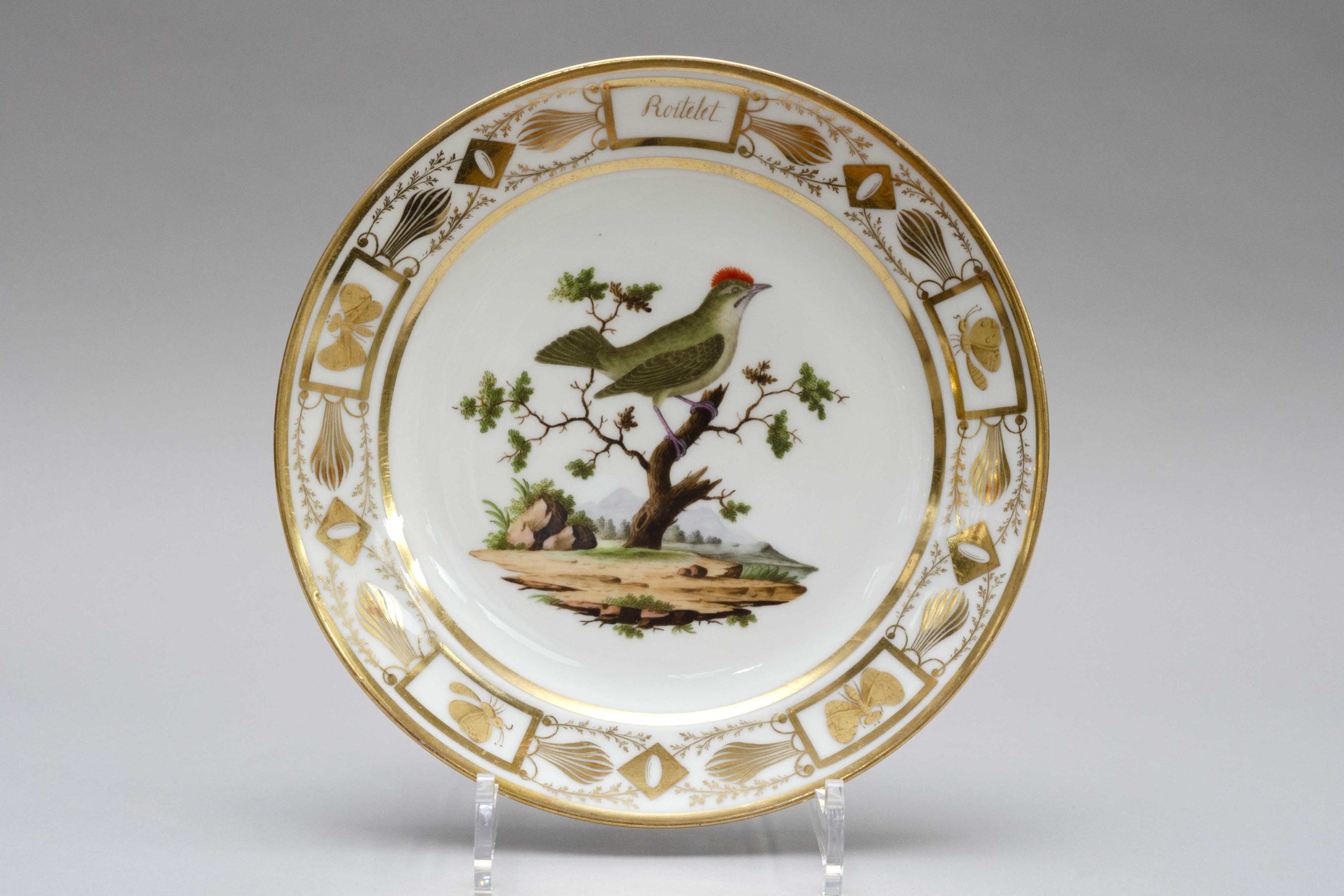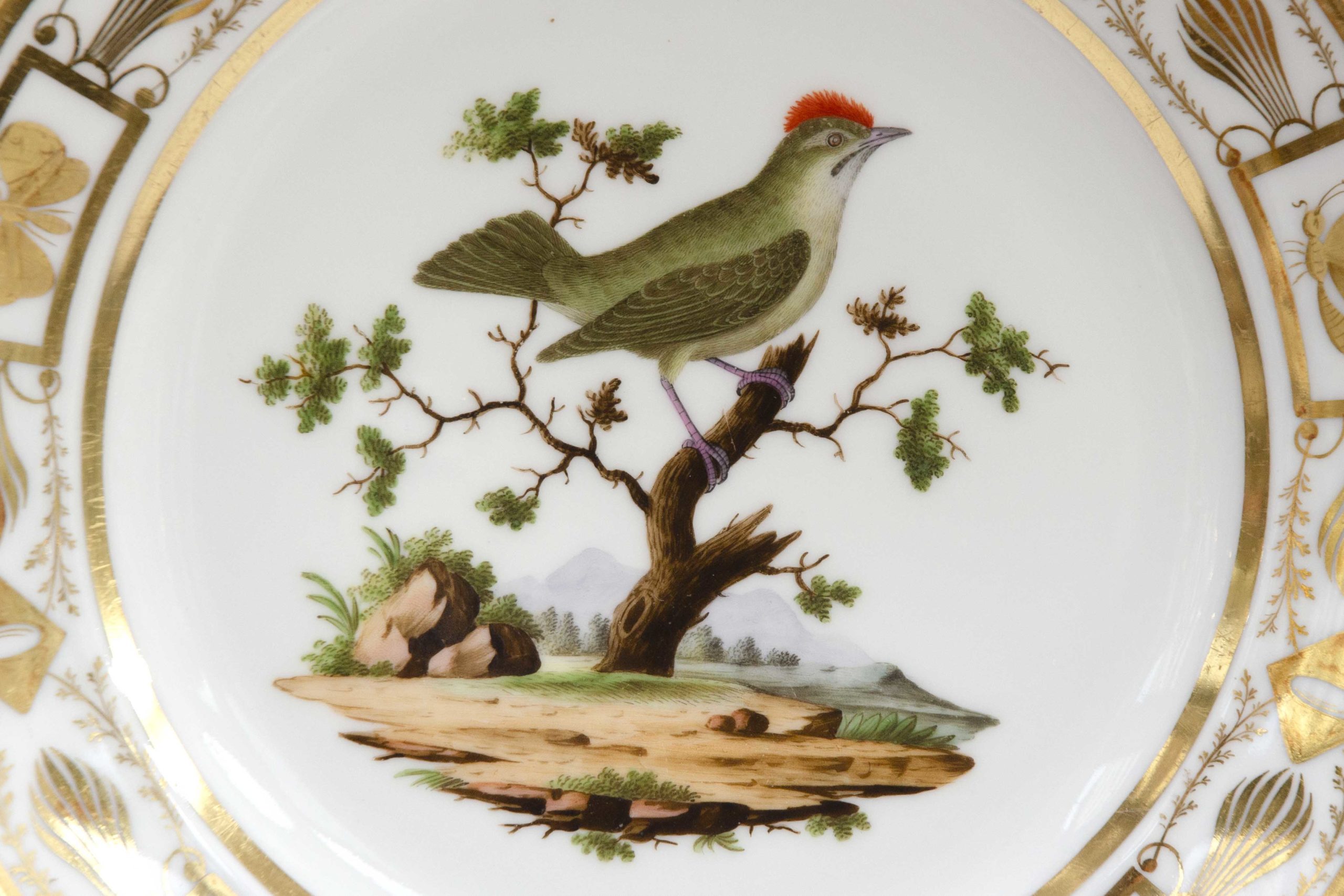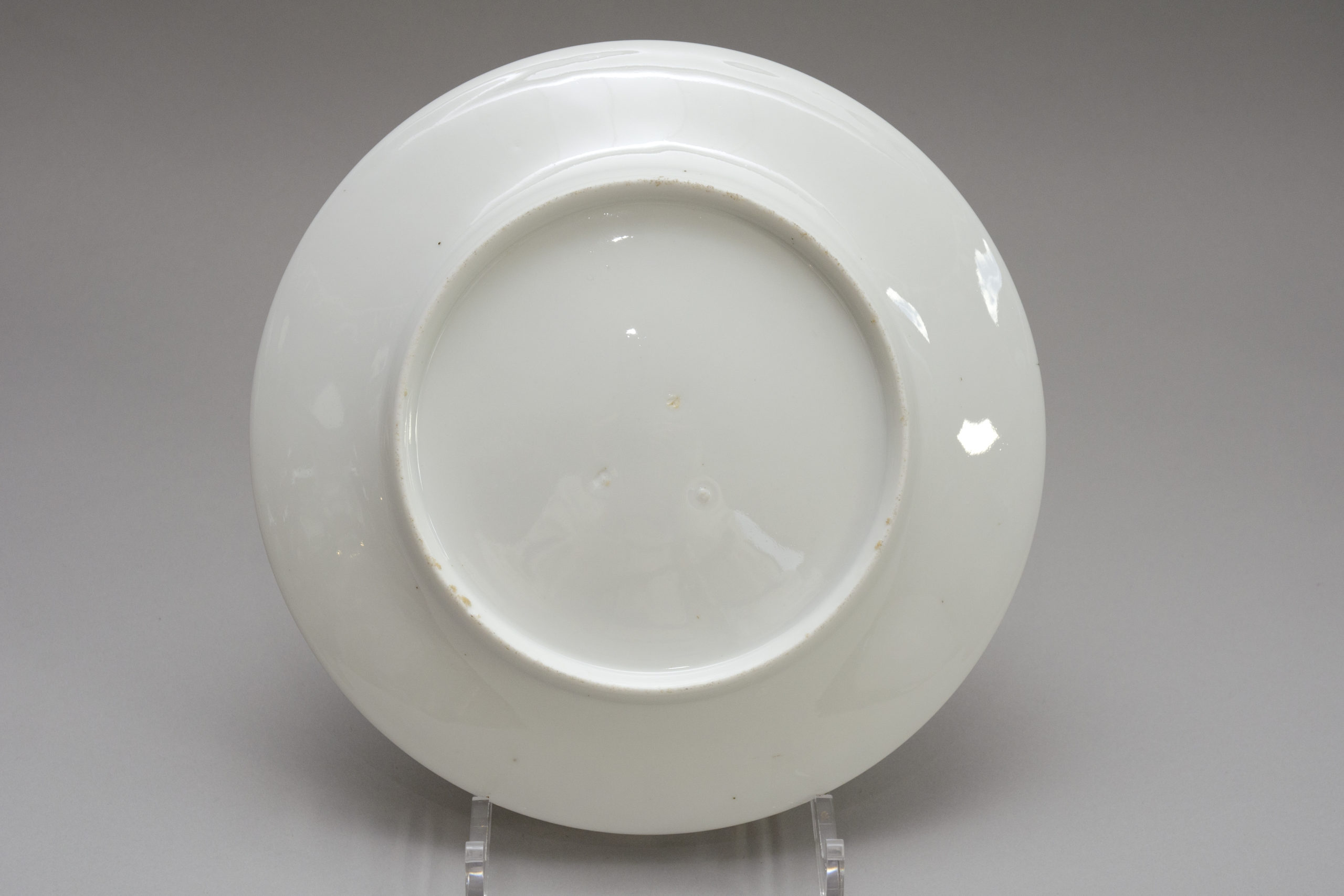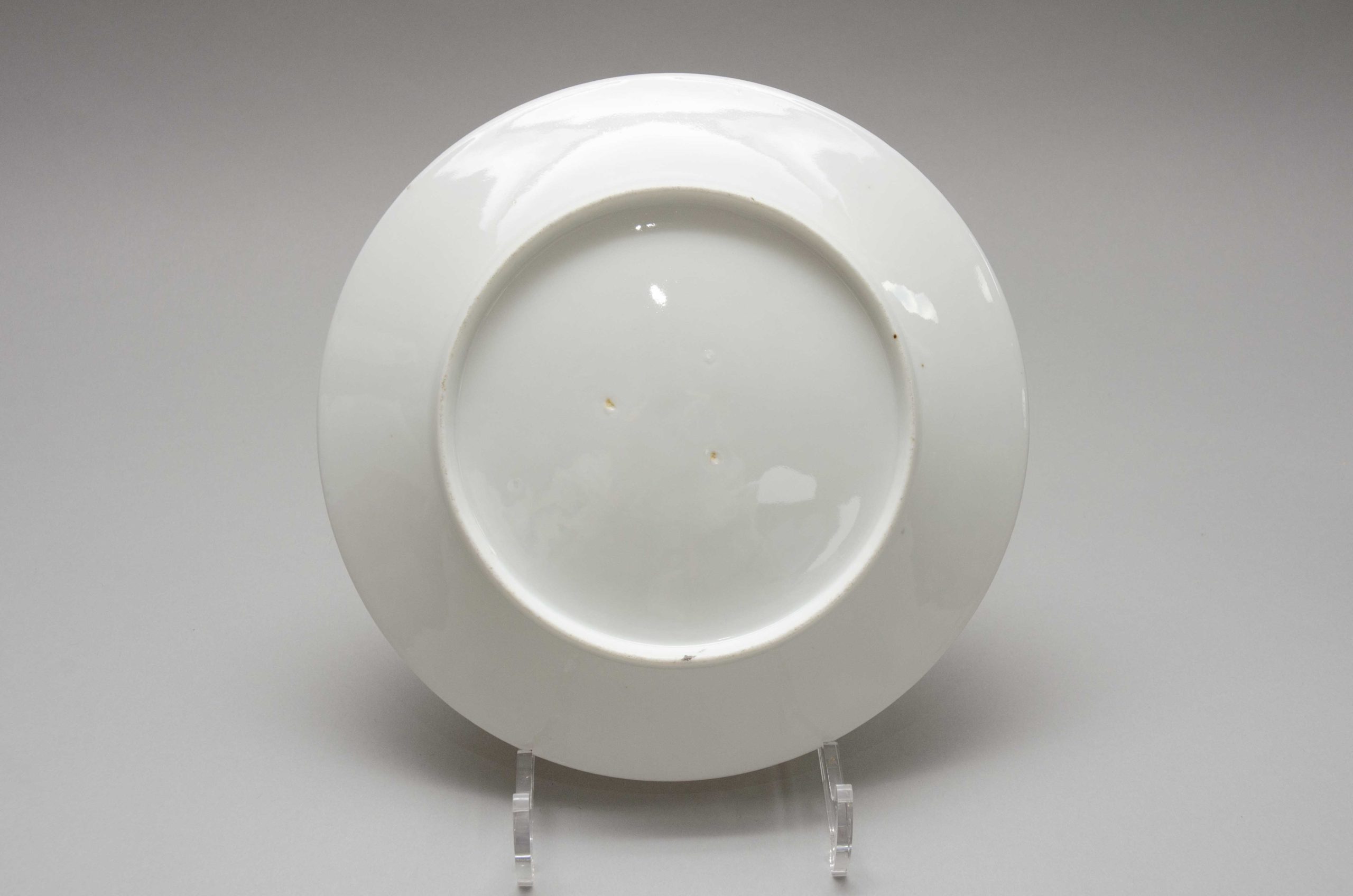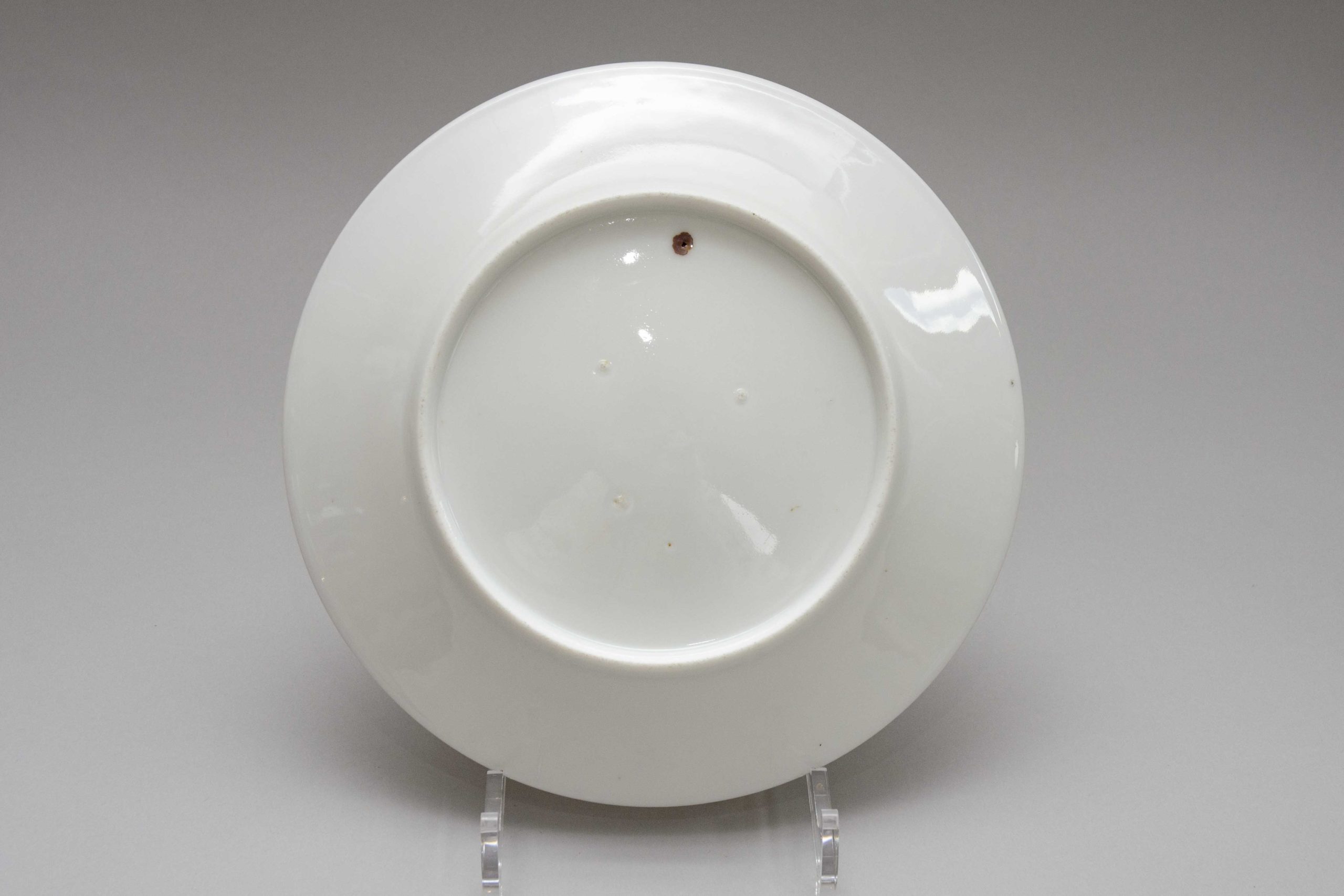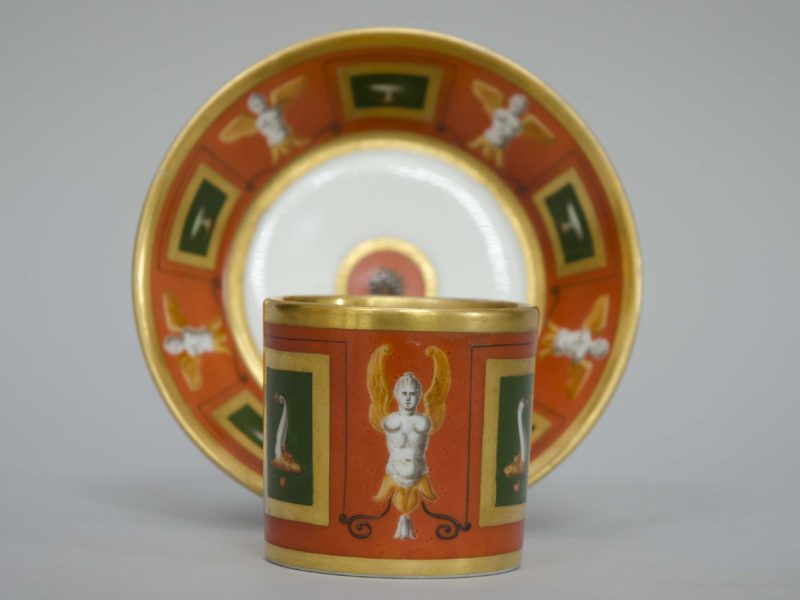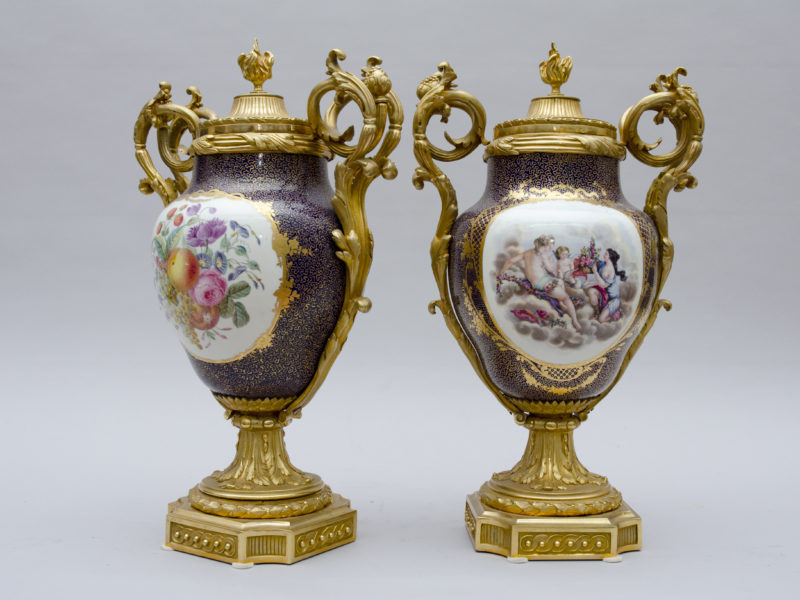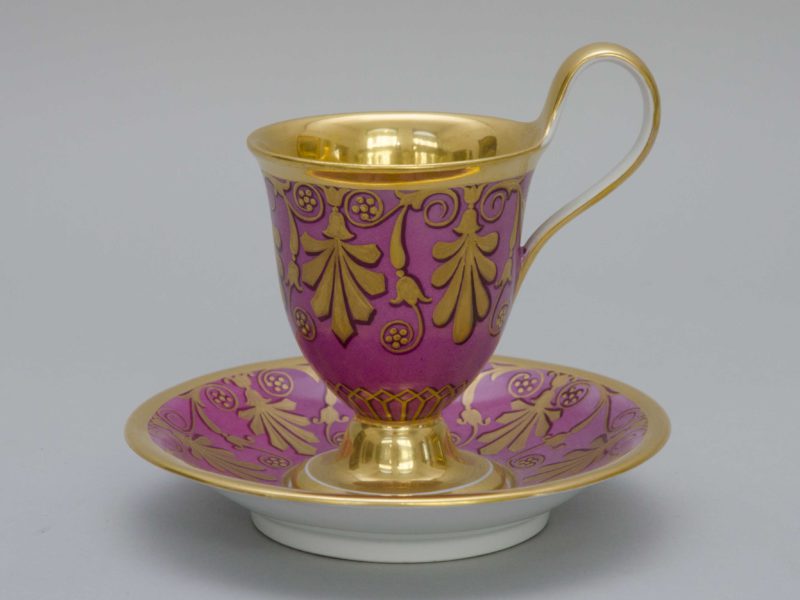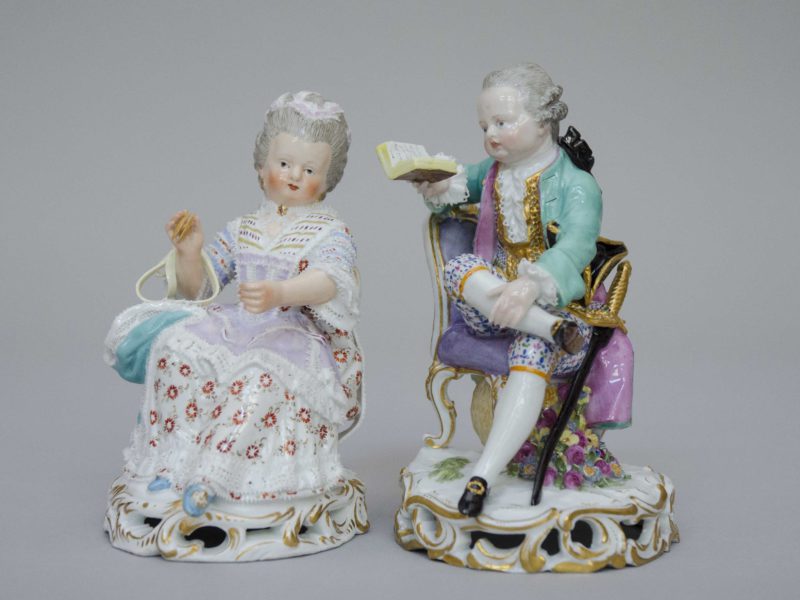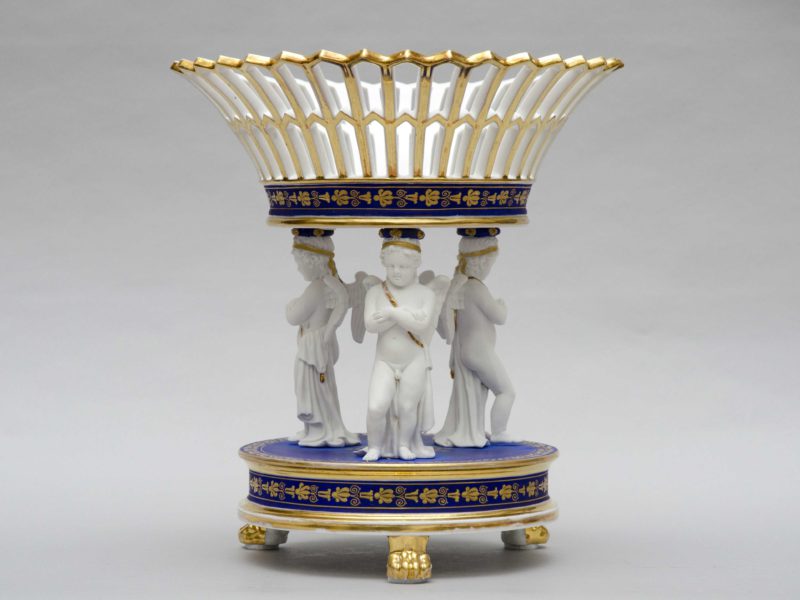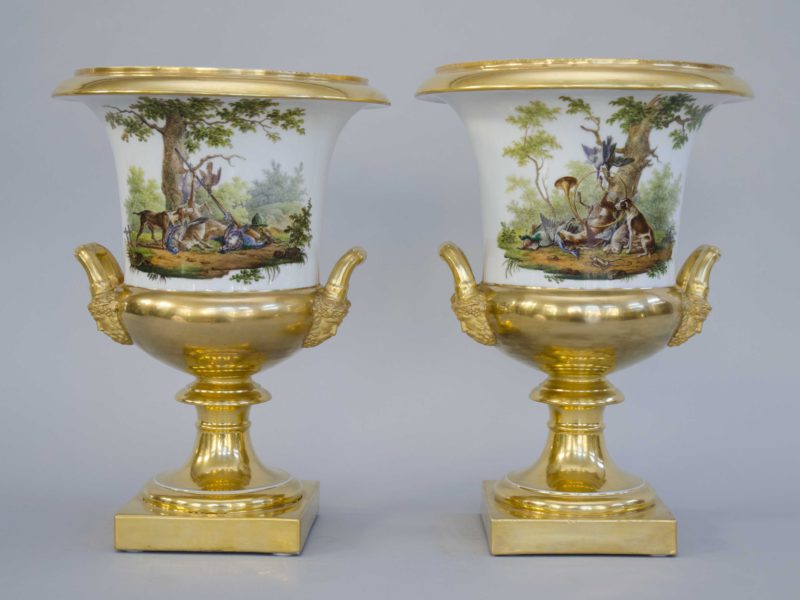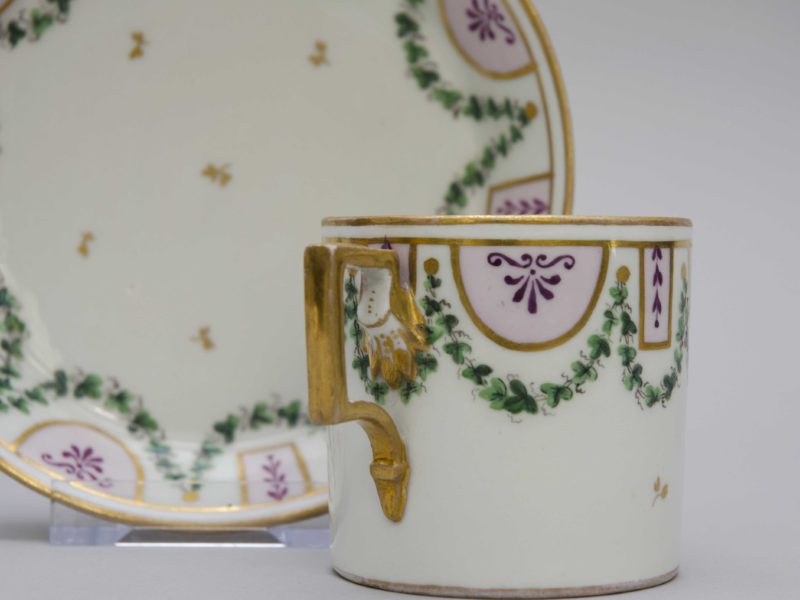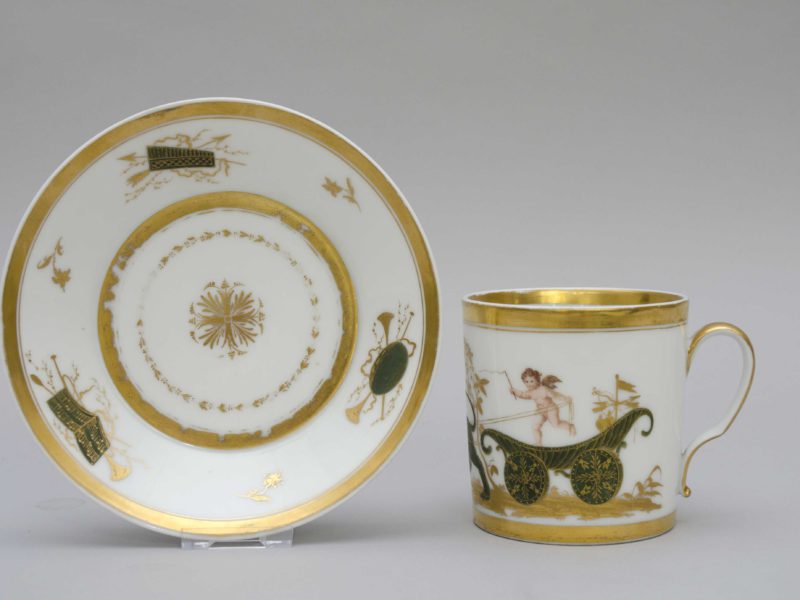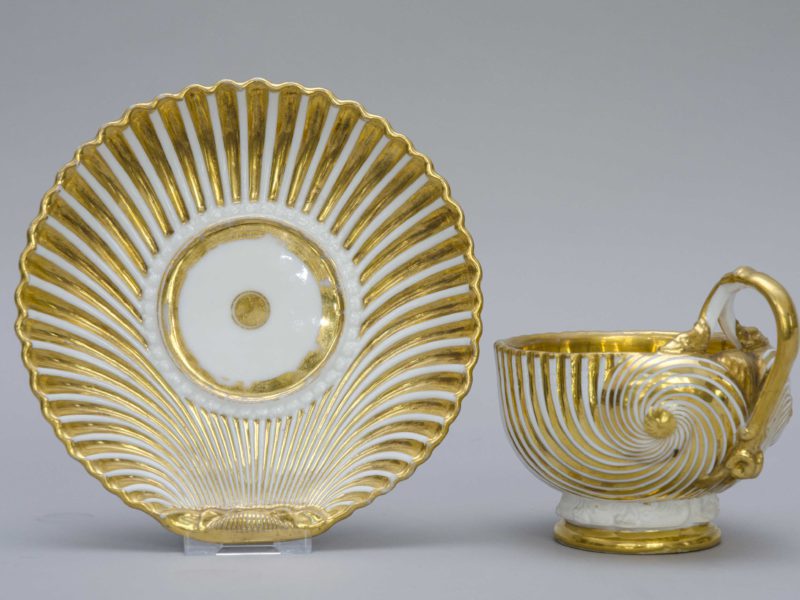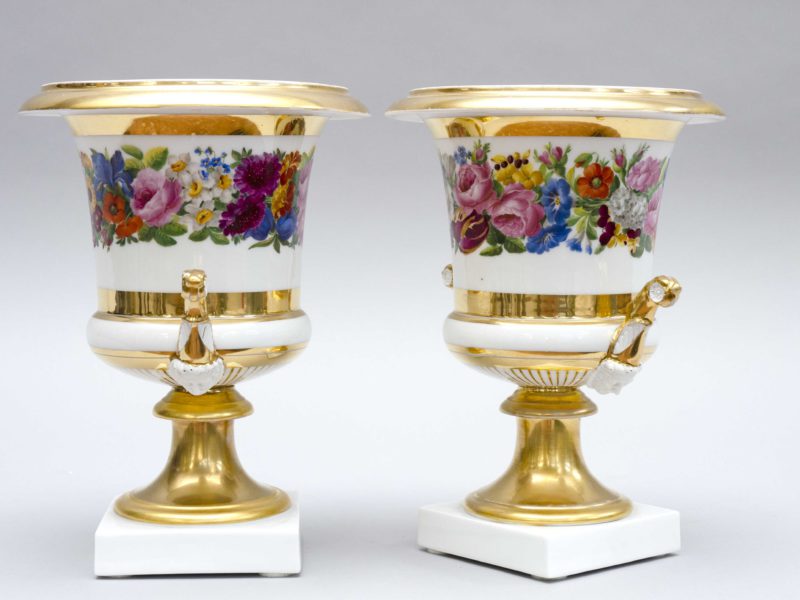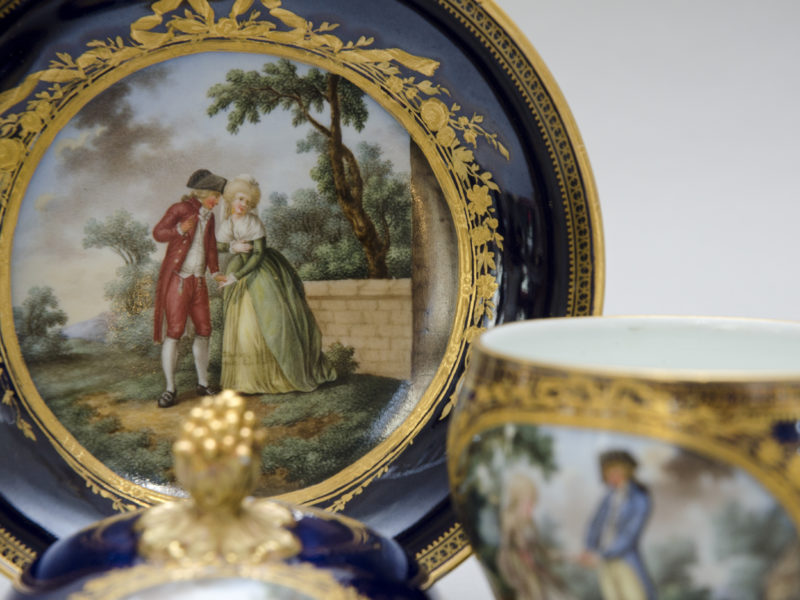
“Buffon’s birds” plates, Paris
Out of stock
Rare set of eight plates decorated with birds in a natural decor after Buffon’s Natural history encyclopedia. Beautiful bright gold highlights drawing butterflies and other geometrical shapes with a cartouche in the upper center with the name of the bird. Excellent condition. A rarity on the art market.
Size: diameter of the plates: 23cm
Paris, late 18th century.
lit: The Count of Buffon, Georges-Louis Leclerc, is a French naturalist, biologist, mathematician, and writer (Montbard 1707-Paris 1788). Buffon’s work is of exceptional importance for its diversity, richness, originality, and influence. His monumental “Histoire naturelle” was, during his lifetime but also after his death, a powerful vehicle for the dissemination of scientific knowledge.
The first volume of the “Histoire naturelle générale et particulière”peared in 1749. It would be composed by 44 volumes (36 during his lifetime, 8 after his death), the last of which was published in 1804, long after Buffon’s death. Accompanying the encyclopaedic movement of the Enlightenment, it is an unprecedented monument, and moreover without successor, in terms of scientific popularisation.
Histoire naturelle covers all subjects: the origin of the solar system (due, according to Buffon, to the impact of a comet), the formation of the Earth, fossilisation, ancient faunas and flora, cautious allusions to the possible evolution of the living world, five volumes on minerals, and above all the detailed description of man, mammals and birds, followed by reptiles and fish.
The success of the work was immediately immense. Before Buffon, no one in France, outside of specialist circles, was interested in natural history: only mathematics and electrostatics excited the enlightened public.
The book, which is accessible to the general public, gives pride of place to illustrations: nearly 2000 plates are collected, particularly for the zoology section. Most of the illustrations were produced by Jacques de Sève (collection of quadruped animals) and François Martinet (natural history of birds), and they describe the anatomy of the animals with precision, sometimes in fantastic settings.
The importance that Buffon attached to the popularisation of science was such that he devoted his reception speech at the Académie française – where he was elected in 1753 – not, as tradition dictated, to a panegyric of his predecessor, but to a true apology of style (Discours sur le style). In it, he argues that, while ideas and theories constitute, especially in the scientific field, a background of thought that is impersonal, style manifests the proper nature of the intelligence that produces it: “Style is man himself. The Natural History bears the mark of Buffon’s personality in its form: the pompous elegance of the style may seem old-fashioned today; but it has the merit of having preserved a perfect clarity of expression in the work.
Buffon’s volumes were read in all circles at least until 1900. (source: the Larousse encyclopaedia)
Out of stock
Contact us